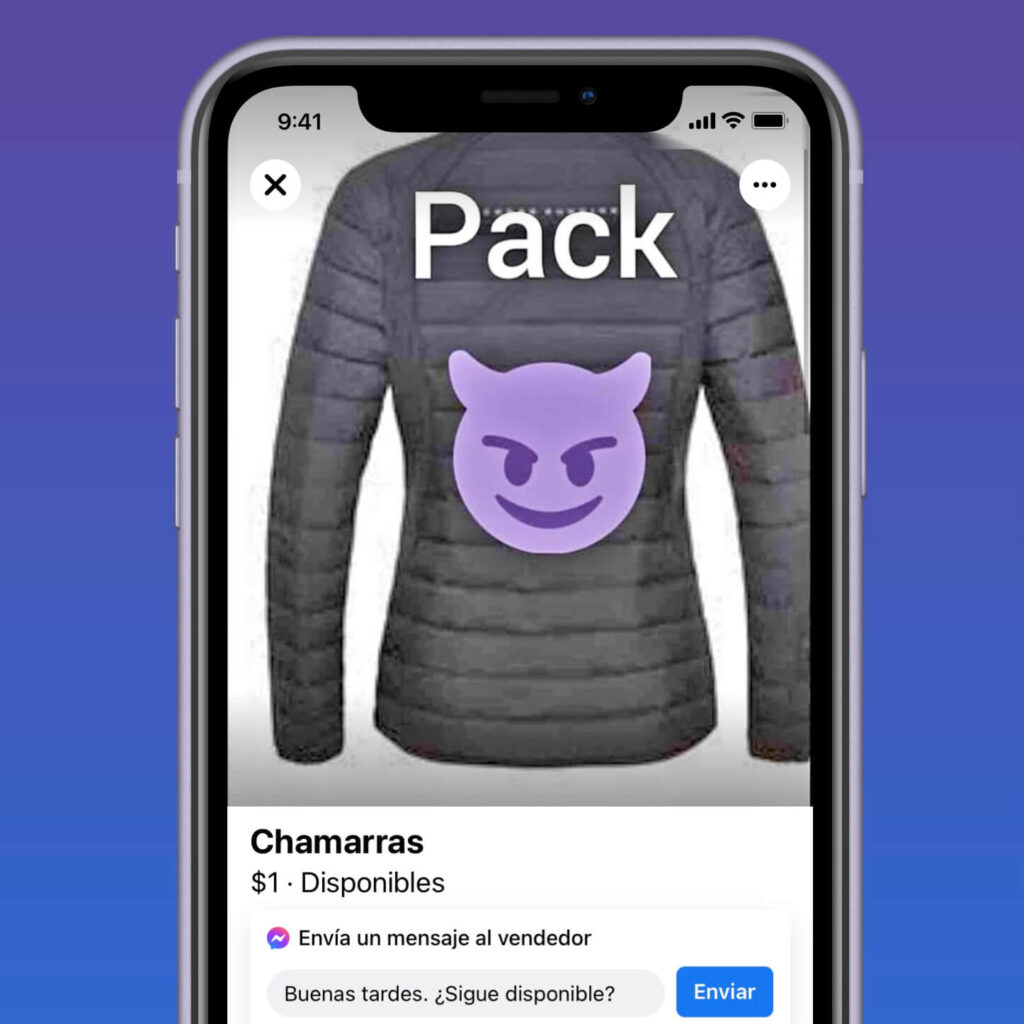
Pamela Cruz. Peninsula 360 Press [P360P].
For 17-year-old Paula "N", everything was going great with her boyfriend, a 20-year-old, after a couple of months of dating, the COVID-19 pandemic came and got in the way of the two continuing to see each other.
A month later he asked her for a picture, one of those where skin takes center stage, he went from asking her to show her back to one of her naked torso, and six pictures later she was already naked on her smartphone -Smartphone-.
Two weeks later Paula was on the devices of all of Carlos' friends, she found out from a friend who told her and showed her what they were saying about her. She called her boyfriend and questioned him for spreading the images she had lovingly sent her, he denied everything and ended up saying, "You're crazy. We'd better leave her there, I'll be damned.
Paula did not stop crying for days, she felt fear, courage, shame and disgust. At one point she even thought about hurting herself if her parents found out. She decided not to do anything legally because "whoever is going to listen to me, there are many who have the same problem, I won't do it again," she told Peninsula 360 Press in an interview.
Paula's case is becoming more and more commonplace, the same thing has happened to some of her friends, she tells us. However, there are also some girls who seek to be part of that movement which they call "FedEx" or "Zelda", the first name referring to the delivery of packages or in this case, send the "pack", while the second name evokes the video game where Link is the main character, and by this they mean passing a link to download images of a sexual nature.
Jorge "N"'s case was different, he was 17 when it all happened, he's gay, but his parents didn't know it until one of his cousins showed them a website where videos of him masturbating appear. His parents questioned him about it, Jorge got up the courage to tell them everything.
Miguel was a guy she met on a social network called Grinder, everything started in March and by April they were already dating, they talked about everything, but things quickly escalated to a sexual dialogue.
Until before the pandemic they met several times, after the confinement everything went to the virtual, through WhatsApp, Miguel demanded more and more "material" to be able to advance in the relationship, but the insistence led Jorge to get tired and end the relationship.
Miguel got upset and told Jorge that if the relationship did not continue, everyone would find out about his private life. And so he did. He uploaded the videos and photographs to a pornography site, where Jorge could no longer do anything.
"I've gone down in flames. The truth is I was beautiful, I liked it, I fell in love, and I swear I never thought about what I would do with my videos. I was so afraid that people I know who didn't know I was gay would know. The good thing was that my parents understood the situation and supported me, but I never heard from him again, he didn't answer my messages or return my calls. It was all over. You have to be careful," he said.
At some point Jorge thought of denouncing him, however, he did not because of the stigma that exists for people from the LGBTTTIQ+ community. "They don't get us off as whores, and they think we even like to be exposed. The police don't know how to act with us and they are macho.
According to the academic, activist and "hackfeminist", Irene Soria Guzmán, it is very possible to lose the notion that the Internet is a space that everyone builds, however, to the use of social networks and messaging platforms, this place becomes private and has specific rules that often do not protect the user, and more so women.
"-The Internet- is not the public square, and even though it seems that it is, it is not, -the young people- they are having an affective relationship under the rules of these applications," said the specialist.
In an interview, he noted that sometimes young men share their intimate photographs as a form of belonging or as a token of affection, while their male peers abuse that trust and share their images.
He added that men, too, have been taught that they have the right to appropriate women's bodies, and that only they can enjoy such photographs.
"Most cases of distribution or dissemination of photographs without consent are made by men," he said. "Girls share these pictures often feeling pressured or feeling that they are going to gain some validation in a group or that they are going to be part of something, and these young men take advantage of that. It comes from a patriarchal education.
For most men, sharing sexually explicit photographs is like sharing achievements and treasures that they have gained after violating young women's trust, "they simply see it as community support," explained Irene Soria.
He also recalled that, after studies, it has been observed that young people circulate the photographs or videos of these women, using keywords in various messaging platforms, to avoid being detected when they request or send the images.
In the face of this, he pointed out, "it is necessary to empower young women and girls, because they have every right to say no to requests, to be worth no less for saying no, on the contrary, if they do not want to, do not feel good about it and it is not something that satisfies them, they have the right to say no. They do not teach us to set limits".
"Empower yourself, empower your body, it's yours, it's your rules. Whatever you want to happen is going to happen and no one has to pressure you to do anything at all, that includes waxing, wearing a skirt or not wearing makeup. You're worth it for what you are," she said.
"Young people must know that just as they have the right to set limits in the physical, they must also set limits in the virtual," he added.
Although the discovery of sexuality is very normal, it is important to consider that there are methods and tools that can help and facilitate virtual interaction with a sexual nature.
There are messaging platforms such as Telegram or Signal that allow the self-destruction of photos and videos, in addition to the person who is sharing these images, can have control of the time you want them to be seen.
In turn, these platforms allow you to have encrypted messaging, and secret me so neither party can take screenshots, and warns the other participant if the other person has attempted any action to obtain the information recorded there.
To this, Irene added that it is essential that when a photo or video is taken, the face, tattoos or particular signs are not shown so that it can be verified which person is the one who issued the images.
There are also applications that allow censorship or distortion of certain parts of the image, so that they are not shown in their entirety.
In addition, if the images were taken with a mobile phone or tablet, the devices must have security passwords to protect their photos and videos, and the passwords must be changed from time to time to prevent someone from misusing them, Soria Guzman said.
Sexting and sexual behaviors
A comprehensive analysis of 23 studies on adolescent sexual behavior, involving 41,723 participants, revealed that adolescent sexting is associated with a number of risk factors for youth, including multiple sexual partners, lack of contraceptive use, and mental health problems such as anxiety, behavioral depression, and substance use.
According to a study conducted by the University of Calgary and published in the medical journal JAMA Pediatrics, there is a need for educational campaigns that raise awareness of digital health, safety and behaviour issues to help young people navigate their personal, social and sexual development in a digital world.
"Sexting has become the newest method of expressing sexual behavior in adolescents. It is common and increasing," said Dr. Sheri Madigan, PhD, an associate professor in the Department of Psychology at the University of Calgary, who was responsible for the study.
"Our previously published research suggests that one in four teens receives sexual messages and one in seven sends them. We also know that most young people don't talk about this at home," he added.
The study also revealed that 49 percent of parents have no intention of talking to young people about their sexual health online or off, "so it's really a coin toss to know if young people are going to learn about safe, legal and ethical digital practices for their parents.
That's why sexting should be incorporated into the sex education curriculum in schools, said Camille Mori, a master's student at Madigan's Determinants of Child Development Lab and lead author of the JAMA Pediatrics article.
"More than anything, this study is a call for more and better education," says Mori. "We need to have those conversations about consent. Not just in terms of sexual consent, but also around image distribution. What does consent mean in the digital age? What do you do when you receive messages? And what is your responsibility when someone shows you or forwards someone else's text message? We need to talk about ethics and the consequences of this on both sides," he said.
The 23 studies analyzed for the JAMA Pediatrics article included adolescents aged 12 to 17, and the studies were conducted between 2012 and 2018. The meta-analysis examined studies from around the world, most of them based in North America, but also from countries such as Nigeria, Korea, Australia, Peru and others.
Laws and sexting
It should be noted that in the case of California, when sexting is consensual and occurs between adults it is perfectly legal under state law, so if each party agrees to send nude videos, sexually explicit videos or flirtatious messages, there are no regulations against it.
However, there are several ways in which sexting becomes a criminal act and can result in significant charges.
On the one hand, sexting requires the consent of all persons involved. If one person does not consent to these messages, the other must immediately stop sending messages, photos, videos or audios, otherwise he or she may be accused of harassment.
The "Porn Revenge"
In addition to disseminating sexual messages or images without consent, sexting can also become illegal if a party shares private images or videos that it received without the owner's consent.
This often occurs after a breakup, as a member may be angry and choose to leak their ex's nudes, but this is a clear violation of California's Revenge Porn Laws or the California Penal Code, and can result in up to six months in a county jail and a $1,000 fine for the first offense.
In addition, a second offense can double the penalty and, if the case involves a minor, becomes a child pornography case, which can be charged as a misdemeanor or felony and may require the defendant to register as a sex offender.
Sexting between adults and minors is a crime
Anytime an adult sends an inappropriate or sexual message, image or video to a minor, it is illegal and can result in multiple charges. If an adult sends a lewd message to a minor, it is a violation of the California Penal Code.
Also, if an adult receives a sexually explicit image or video of a minor and keeps it, it would be a violation of the state's Revenge Porn Laws.
It should be noted that if an adult offers money to a minor in exchange for sexual activity, it may result in a charge of solicitation of a minor.
California law has very strict laws about interactions between adults and minors and will take any act of sexting with someone 17 or younger very seriously.
Even in cases where the sexting occurred between two minors, if one of them is 16 or 17 years old, he or she can be charged in adult court rather than in juvenile court, however, these cases may remain in juvenile court, which will have milder penalties, but the parents of the accused must still seek a lawyer to form a defense.

